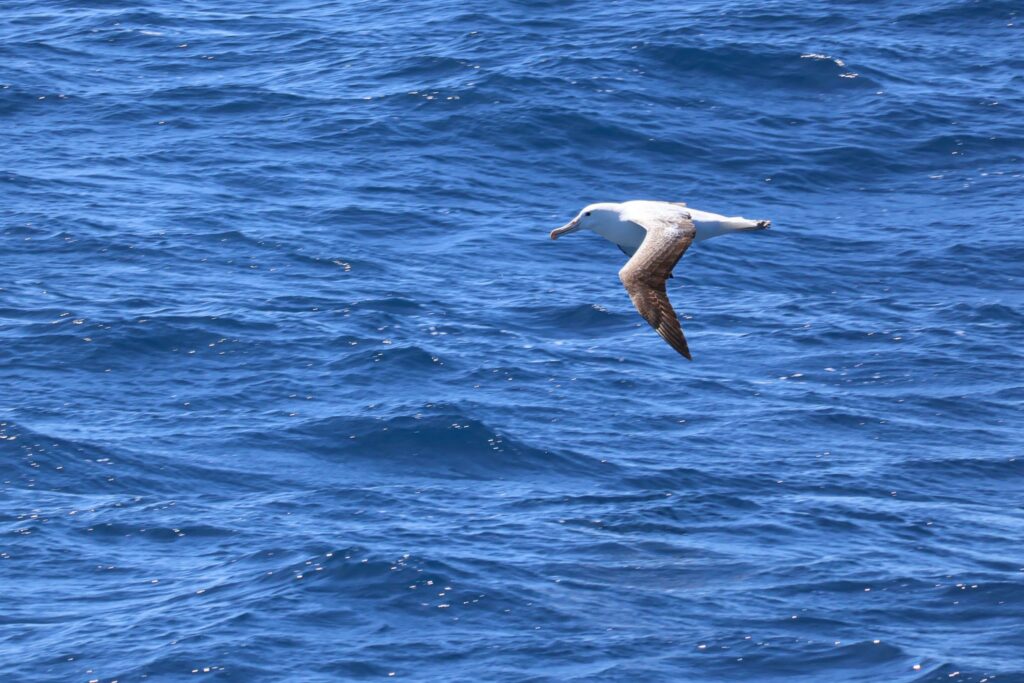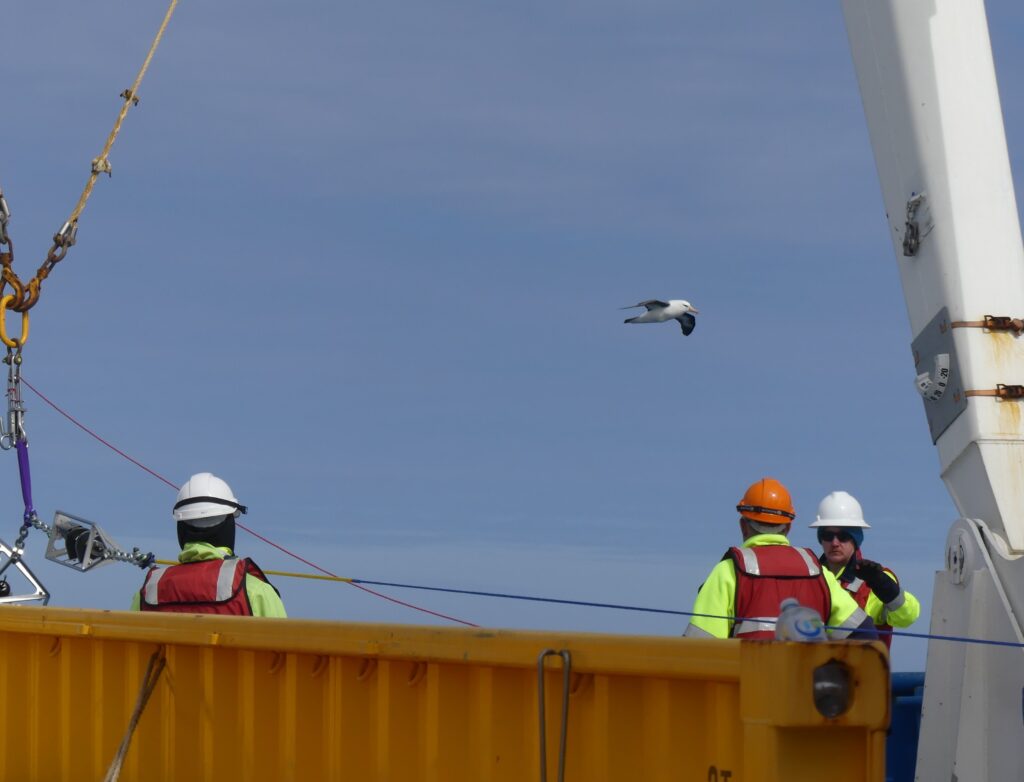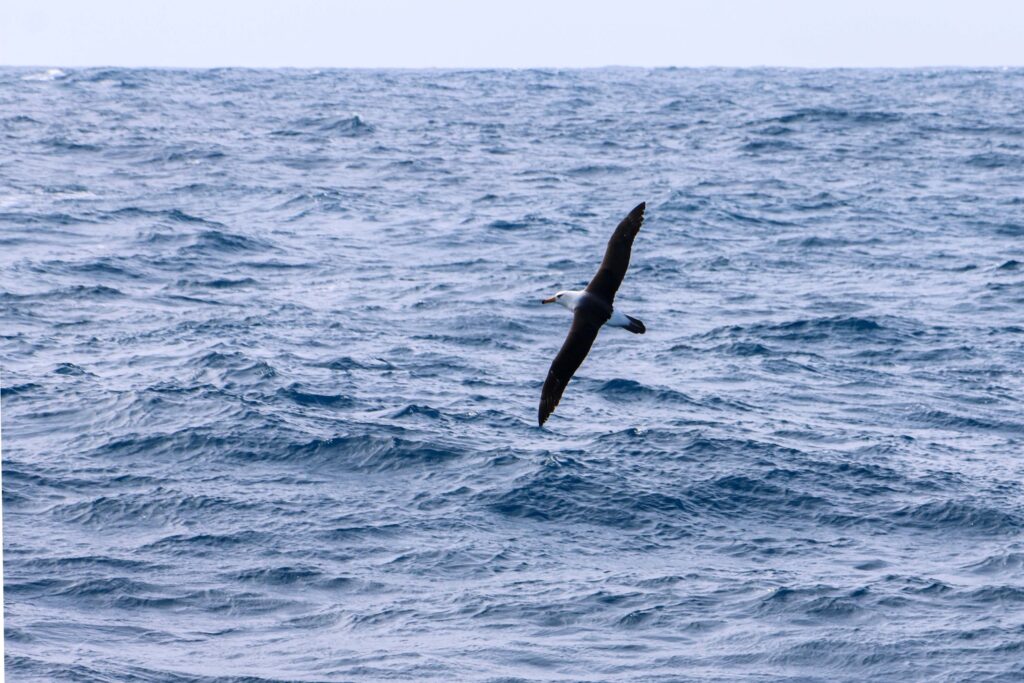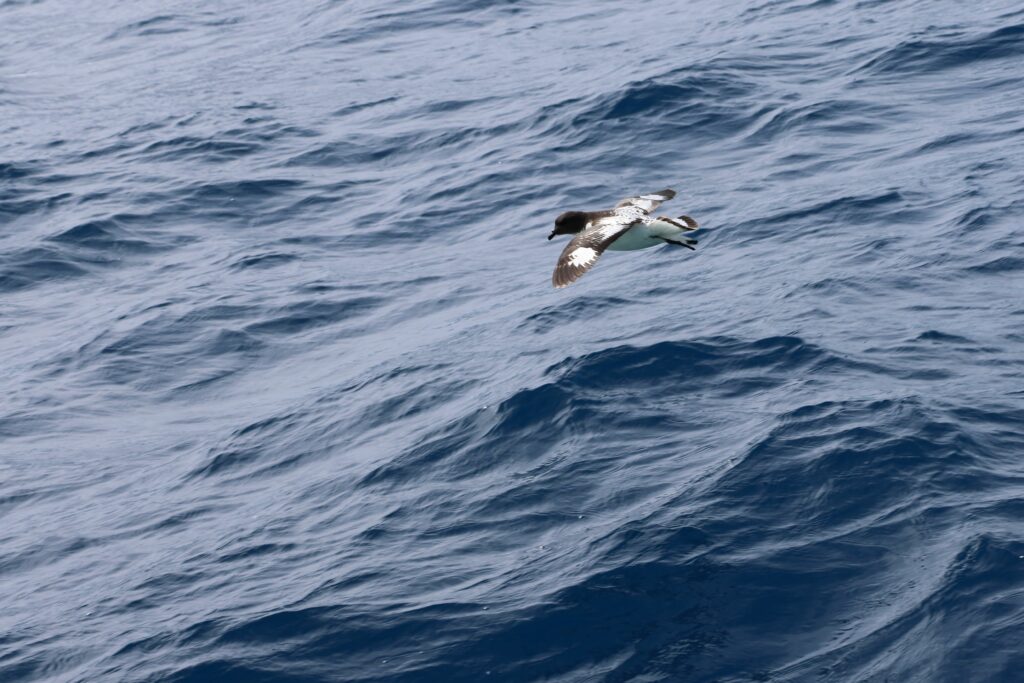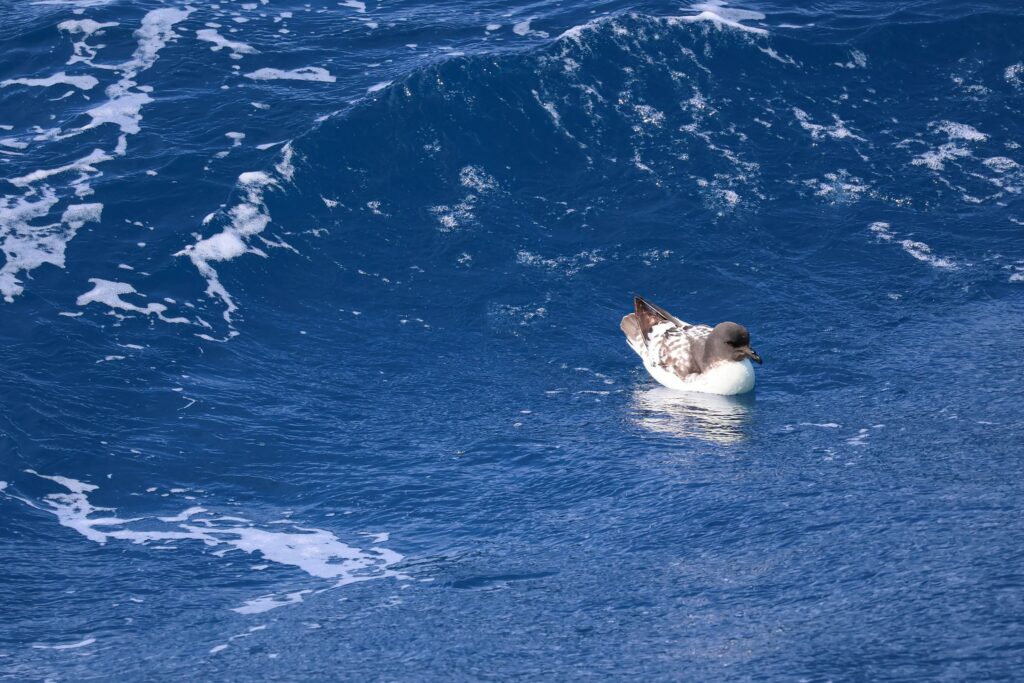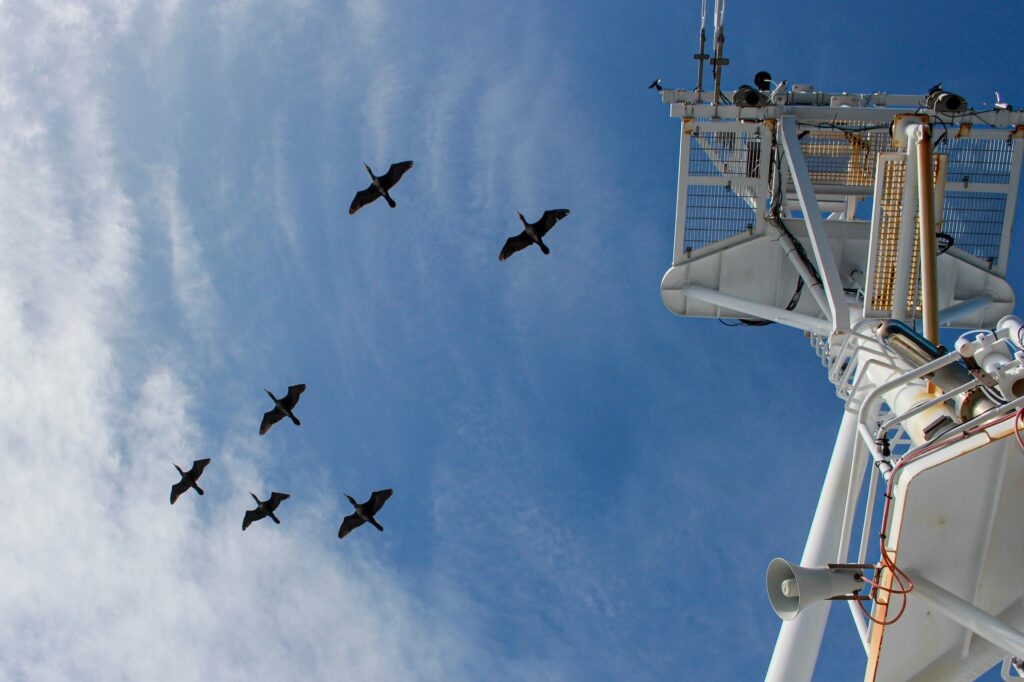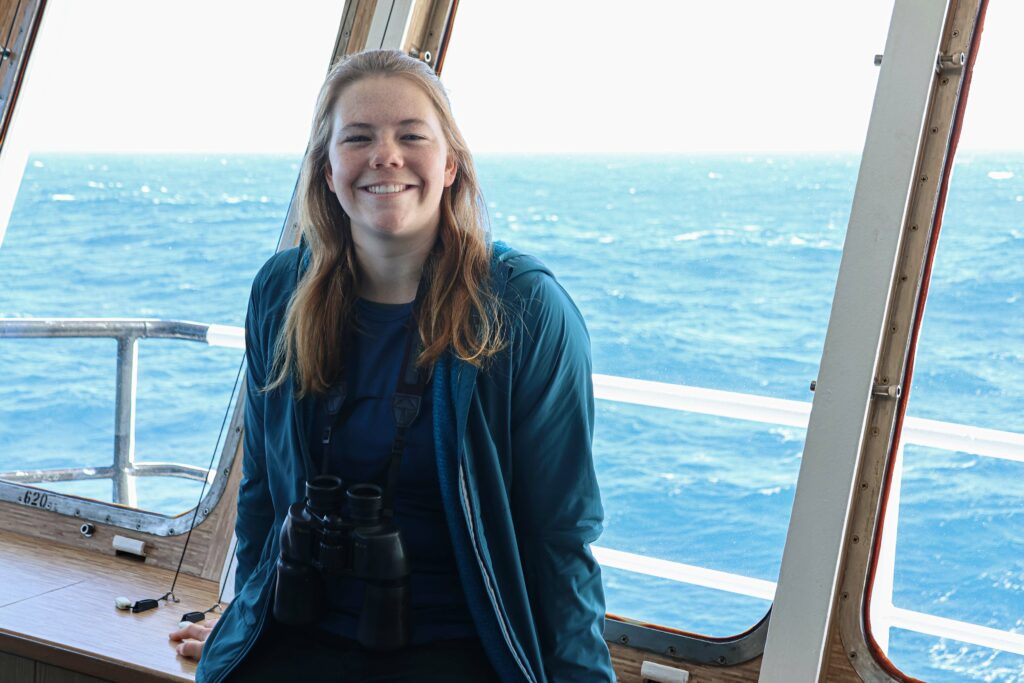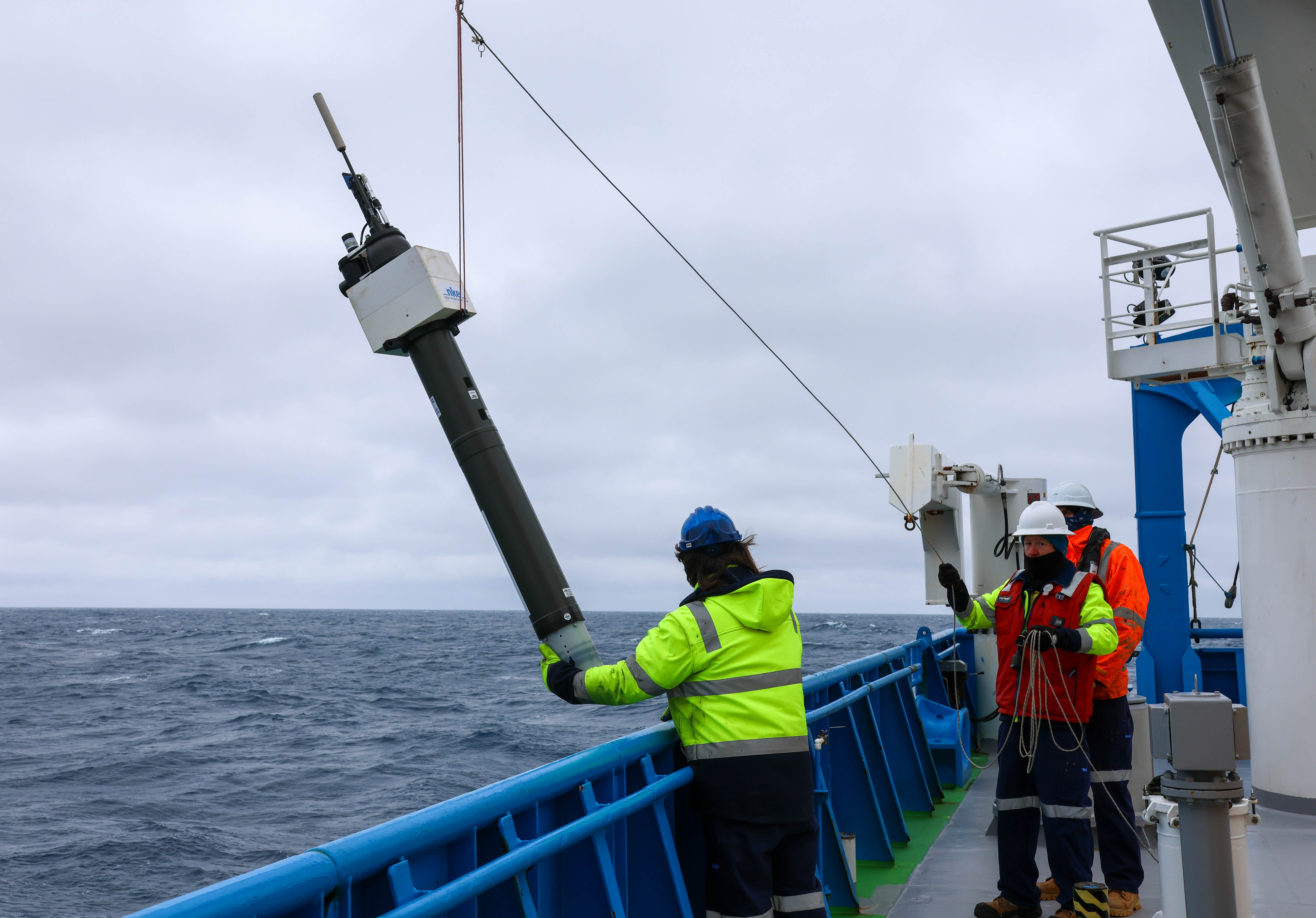Soaring on salty winds
Sylvie King
Since discovering the “Animorphs” science fantasy books at the ripe old age of 11, I’ve firmly believed the ability to shapeshift into any animal would be the ultimate superpower. Want to fly? No problem. Breathe underwater? Easy. Throughout the FOCUS voyage aboard CSIRO research vessel (RV) Investigator, there have been several heated debates arguing otherwise but I maintain my standing. I’ve always been fascinated by the diversity of life on Earth, and while shapeshifting unfortunately may never be part of my skill-set, spending five weeks in the Southern Ocean surrounded by some of the most incredible creatures on the planet is a pretty reasonable compromise.
It’s safe to say there’s been no shortage of seabirds over the past few weeks. We’ve been treated to daring acrobatic displays from prions and cape petrels, the majesty of royal albatrosses and have even caught a few death glares from giant petrels patrolling the skies. It doesn’t matter how many hours I spend sitting inside the monkey island at the top of the ship, watching them never gets old.
Many of the species we’ve witnessed are pelagic, meaning they spend most of their lives at sea. Royal albatross (the largest albatross species) can spend up to five years above the waves before returning to their colony! Not only is this a super cool fact, it also means these birds spend a large portion of their lives in an environment humans are rarely able to visit. Having the opportunity to see the stars of the Southern Ocean outside of an Attenborough documentary has been such a privilege and really drives home how exceptional this part of our planet is.
Though I’m a biologist and enjoy a good seabird, my research is mostly focussed on the ecology of zooplankton, tiny animals that drift in the ocean currents. Zooplankton are the main consumers of phytoplankton – the ‘salad’ of our seas – and in turn are an important food source for larger animals like fish. This means I spend a lot of my time writing about how zooplankton are a critical part of the food chain that supports marine predators like seabirds, and I cannot describe the joy I feel seeing this ecosystem in action firsthand.
To survive and thrive in such a remote environment, Southern Ocean seabirds have some unique tricks up their feathery sleeves. Albatross, petrels, shearwaters, and prions are ‘tube-nosed seabirds’ and have such an advanced sense of smell they can sniff out phytoplankton blooms. These blooms indicate regions where fish and squid are hiding out, ready to be snatched by hungry beaks. They also have special salt glands above their eyes which allow them to drink salty seawater!
And finally, the impressive wingspan of the wandering albatross isn’t just for show. It lets them take advantage of the wind and glide to their destination instead of energy-intensive flapping. This allows albatross to travel more than 120,000km in a single year!
I feel so fortunate to be conducting state-of-the-art science in this uniquely rugged part of the world, and even luckier to be able to share it with the extraordinary wildlife that call the Southern Ocean home.
Sylvie King is a Masters student at the Institute for Marine and Antarctic Studies at UTAS.
This research is supported by a grant of sea time on RV Investigator from the CSIRO Marine National Facility which is supported by the Australian Government’s National Collaborative Research Infrastructure Strategy (NCRIS).



